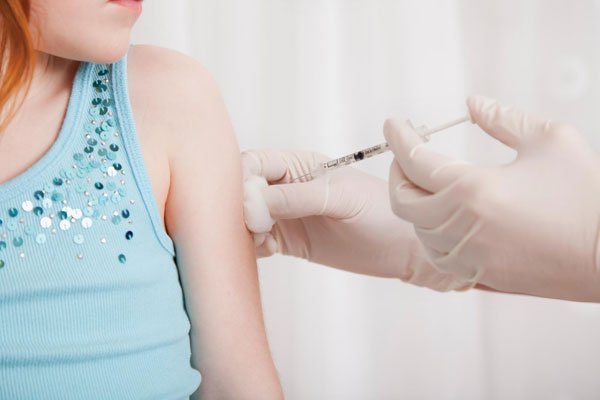Child Immunizations
Immunizations are designed to protect against serious illnesses ranging from polio and tetanus to measles, mumps, and the seasonal flu. Many people consider them the most important part of well-child checkups.
How immunizations work
Immunizations are vaccines made from either weakened or killed versions of the bacteria or virus that cause a particular disease. When these altered viruses and bacteria are injected or taken orally, the immune system mounts an attack that stimulates the body to produce antibodies.
These antibodies remain active in the body, ready to fight off the actual illness if necessary. For example, if pertussis (whooping cough) breaks out in your area, an immunized child is much less likely to contract the disease than one who wasn't immunized. And if a child gets pertussis despite being immunized, the disease is usually much milder and less likely to result in serious complications.
2017 CDC immunization schedule
Every year, the Advisory Committee on Immunization Practices at the U.S. Centers for Disease Control (CDC) publishes a new schedule showing which vaccines are recommended and when to get them. This schedule is endorsed by the American Academy of Pediatrics and the American Academy of Family Physicians.
DTaP, to protect against diphtheria, tetanus, and pertussis:
• At 2 months
• At 4 months
• At 6 months
• Between 15 and 18 months
• Between 4 and 6 years
• A booster shot at age 11 or 12 years (Tdap)
Hepatitis A, to protect against hepatitis A, which can cause the liver disease hepatitis:
• First dose between 12 and 23 months
• Second dose six to 18 months later
Hepatitis B, to protect against hepatitis B, which can cause the liver disease hepatitis:
• At birth
• Between 1 and 2 months
• Between 6 and 18 months
Hib, to protect against Haemophilus influenza type B, which can lead to meningitis, pneumonia, and epiglottitis:
• At 2 months
• At 4 months
• At 6 months (if needed, depending on brand of vaccine given at 2 and 4 months)
• Between 12 and 15 months
HPV, to protect against human papillomavirus, the most common sexually transmitted disease and a cause of both genital warts and cervical, anal, and throat cancers:
• Two doses for girls and boys at age 11 or 12 years (although it's possible to get vaccinated anytime between ages 9 and 14 1/2 years)
• Three doses for girls and boys who didn't complete the series before age 15 or who started the series after age 15
Influenza (the flu shot), to protect against the seasonal flu:
• One dose for most children age 6 months and older, every year in the fall or early winter
• Two doses (taken at least 28 days apart) for children 6 months to 8 years old who are getting the flu vaccine for the first time, or who have previously received only one dose of vaccine
Meningococcal vaccine, to protect against meningococcal disease, the leading cause of bacterial meningitis in the United States (before vaccine use):
• Between 11 and 12 years
• A booster shot at 16 years
MMR, to protect against measles, mumps, and rubella (German measles):
• Between 12 and 15 months
• Between 4 and 6 years
Pneumococcal (PCV) vaccine, to protect against pneumococcal disease, which can lead to meningitis, pneumonia, and ear infections:
• At 2 months
• At 4 months
• At 6 months
• Between 12 and 15 months
Polio (IPV), to protect against polio:
• At 2 months
• At 4 months
• Between 6 and 18 months
• Between 4 and 6 years
Rotavirus, (oral, not injection) to protect against rotavirus, which can cause severe diarrhea, vomiting, fever, and dehydration:
• At 2 months
• At 4 months
• At 6 months (not needed if the Rotarix brand was given at 2 and 4 months)
Varicella, to protect against chicken pox:
• Between 12 and 15 months
• Between 4 and 6 years


